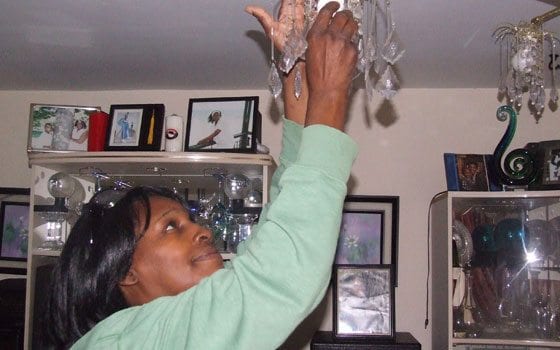
Last Friday, President Barack Obama called upon Americans to participate in a National Day of Service and to give back to their communities on the anniversary of the Sept. 11, 2001, terrorist attacks. Many of the goodwill efforts revolved around helping to make vulnerable neighborhoods more environmentally friendly.
Locally, members of the Episcopal Diocese of Massachusetts gathered at St. John St. James Episcopal Church in Roxbury to “green” the church and residences in the nearby Madison Park Village housing complex by installing energy-efficient light bulbs.
The Rev. Gift Makwasha, the parish priest, said he was happy that his church was chosen to participate in the greening initiative, not only because it meant the installation of much-needed light bulbs throughout the church’s sanctuary, but also because the event was fulfilling a greater good for the community.
“President Obama said that the best way to commemorate 9/11 is to do service and to contribute to the green movement,” he said. “St. James will now be much lighter and better for the environment.”
State Rep. Byron Rushing, a 30-year member of the church, was one of the community volunteers who participated in the light bulb installation. Rushing said the event should give Bostonians a better view into the larger problem of environmental injustices in communities of color.
“I think Roxbury, like many other black communities, is suffering from major environmental problems that, only up until recently, have been overlooked,” Rushing said. “The environmental movement has traditionally been middle-class and white, but now we need to focus on bringing in more people of color into the fold.”
Rushing also said that he is also working on the legislative level to address other environmental problems throughout the city, such as the high rate of asthma in urban areas and its connection to clusters with a high volume of public transportation.
The light bulb installation project was made possible by a partnership between two statewide nonprofits — Massachusetts Interfaith Power and Light (MIPandL), an initiative that since 2002 has offered congregations in the Commonwealth help in reducing their energy consumption and costs, and LiveCooler, which focuses on limiting carbon emissions by installing energy-efficient light bulbs in the homes of low-income families.
“Most churches are energy-inefficient and in serious need of cutting back on their electrical bills,” said Tom Nutt-Powell, president of the Brookline-based consulting firm Capital Needs Unlimited and director of MIPandL. “There is a national movement to make sure all houses of worship are using appropriate lighting.”
St. John St. James and its neighboring residents received compact fluorescent light bulbs (CFLs), which are designed to fight environmental pollution by reducing electricity use by 75 percent and lasting an average of 10 years. A 25-watt CFL can create as much light as a 100-watt incandescent bulb.
Nutt-Powell said the new bulbs will be beneficial for communities of color. According to “The Climate Gap,” a report released in May by the Program for Environmental and Regional Equity at the University of Southern California, the growing climate change problem means that communities of color and the poor will soon have to pay more for basic necessities. As it stands, low-income and minority families already spend as much as 25 percent of their entire income on just food, electricity and water — much more than most Americans.
“The new CFLs will save the families at Madison Park Village collectively $13,000 in electricity bills over the life of the bulbs,” said Jay Barnes, executive director of LiveCooler.
During the day, Episcopal church volunteers went into homes of some Madison Park Village residents to replace the existing incandescent bulbs in their bathrooms and kitchens with CFLs.
Madison Park resident Elsie Brown said she saw the impact of being green immediately in her living room when the CFLs were installed.
“Even things as small as a light bulb make a difference,” she said.


![Banner [Virtual] Art Gallery](https://baystatebanner.com/wp-content/uploads/2024/04/Cagen-Luse_Men-at-store-e1713991226112-150x150.jpg)



